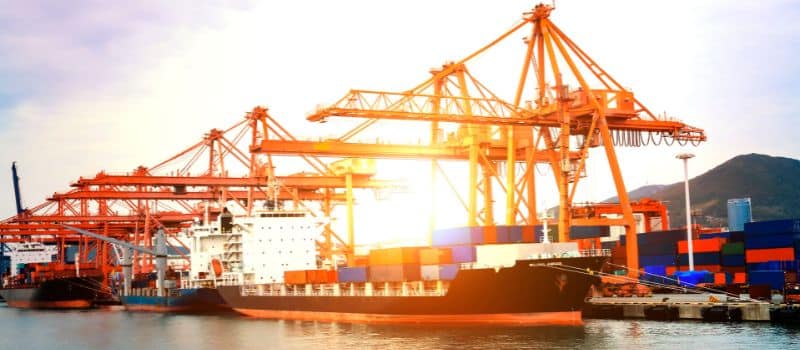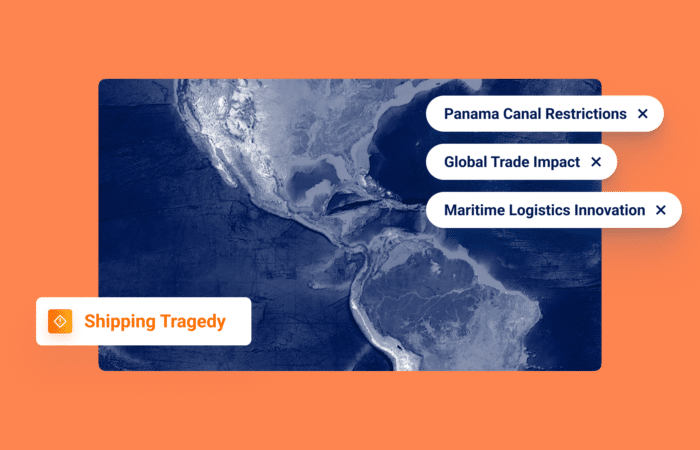What’s inside?
Achieving precise vessel tracking in supply chains is a tough task. Discrepancies between declared carriers and actual ships in transit often lead to inefficiencies and confusion.
Based on Windward’s whitepaper, “A New Day for Data: Overcoming Ocean Freight Data Challenges,” this blog post delves into the turbulent realm of ocean freight tracking – exploring the challenges posed by technological complexities and industry standardization hurdles.
A Lack of Industry Standardization
How is it possible that logistics and supply chain organizations are tracking the wrong vessel so often? A lack of industry standardization and the difficulties in fully overcoming the complexities inherent in ocean freight tracking technologies result in mismatches between vessels declared by the carrier and vessels actually involved in the shipment.
For example, San Diego has more than one port. So, if a port is listed only as “San Diego,” it could lead to a freight forwarder, importer, or exporter looking at the wrong destination for a vessel that will never actually arrive.
Seemingly small differences such as that can make a HUGE difference in your organization’s accuracy and efficiency.
Attempting to sync with carriers and their frequent changes can create inefficiencies and data variance. One of the more pressing issues is translating carrier events into a shipment point of view.
For instance, after the carrier posts a list of events on its website, freight forwarder personnel must synthesize it and create a “shipment details plan.” This includes collecting information and, more importantly, understanding shipments’ origins and destinations – will there be transshipments? What’s the demurrage and detention plan?
These types of unpredictable issues make creating a shipment details plan time-consuming.
Further complicating the picture is the need to quickly adjust to changes in carriers’ events data. Carriers alter images on their website and update shipment details. This often changes the associated data. It’s challenging to effectively address frequent changes with minimal system latency.

Substandard Standardization
One problem fueling the data doldrums is something Windward likes to call “substandard standardization.” Milestone tracking is critical for importers, exporters, and freight forwarders, but which milestones should be tracked? How should they be tracked?
There is no unifying standard method for milestone validation. Additionally, a lack of standard data formats causes inconsistencies: for example, should searches be performed using the vessel name, or the IMO?
A second hurdle that is huge for vendors such as Windward: creating an architecture that can hold hundreds of thousands of records of containers, and eventually millions. This obviously involves a significant amount of quality assurance and testing.
Meanwhile, an even larger standardization issue exists…
DCSA – the Future Standard
The Digital Container Shipping Association (DCSA) has a goal to make shipping services easy to use, flexible, efficient, reliable, and environmentally-friendly. It has established standards for a common technology foundation that enables global collaboration.
One of these standards is track & trace: “DCSA and its member carriers have published track and trace (T&T) standards for the global container shipping industry. These standards comprise a common set of processes as well as data and interface standards that can be implemented by carriers, shippers and third parties to enable cross-carrier shipment tracking. Once implemented, the standards will enable customers and supply chain participants to digitally communicate with all carriers in a unified way.”
With major industry players involved, this will be the future standard. The documentation and definitions are defined by industry specialists and software developers, ensuring they are designed for industry needs. It will be difficult to accurately track containers without adopting this standard.
Vendor Data Challenges
From the perspective of an ocean freight solution vendor, one of the biggest challenges is designing a system that is flexible enough to incorporate multiple data sources from different types into one stream of data.
One example: synchronizing carrier events and vessel activity. Incorporating them is difficult and includes matching vessels and locations to carrier data, sorting the timeline accordingly, adding any vessel activity to the relevant shipment; and then standardizing the data into a single format.
Looking to the Future
Accurate vessel tracking remains an ongoing challenge in the maritime industry, wrought with discrepancies between declared carriers and actual ships in transit. This disparity, often stemming from industry standardization hurdles and technological complexities, causes inefficiencies and hampers operational accuracy.
Windward’s whitepaper, “A New Day for Data: Overcoming Ocean Freight Data Challenges,” sheds light on these issues. The lack of unified standards and substandard standardization practices make data synchronization and accurate tracking a formidable task for vendors.
Windward’s Ocean Freight Visibility, powered by Maritime AI™, is a groundbreaking solution, offering comprehensive insights, accurate ETA predictions, and decision support for logistics experts, empowering organizations to streamline operations, reduce costs, and heighten customer satisfaction in the complex seas of maritime logistics.














